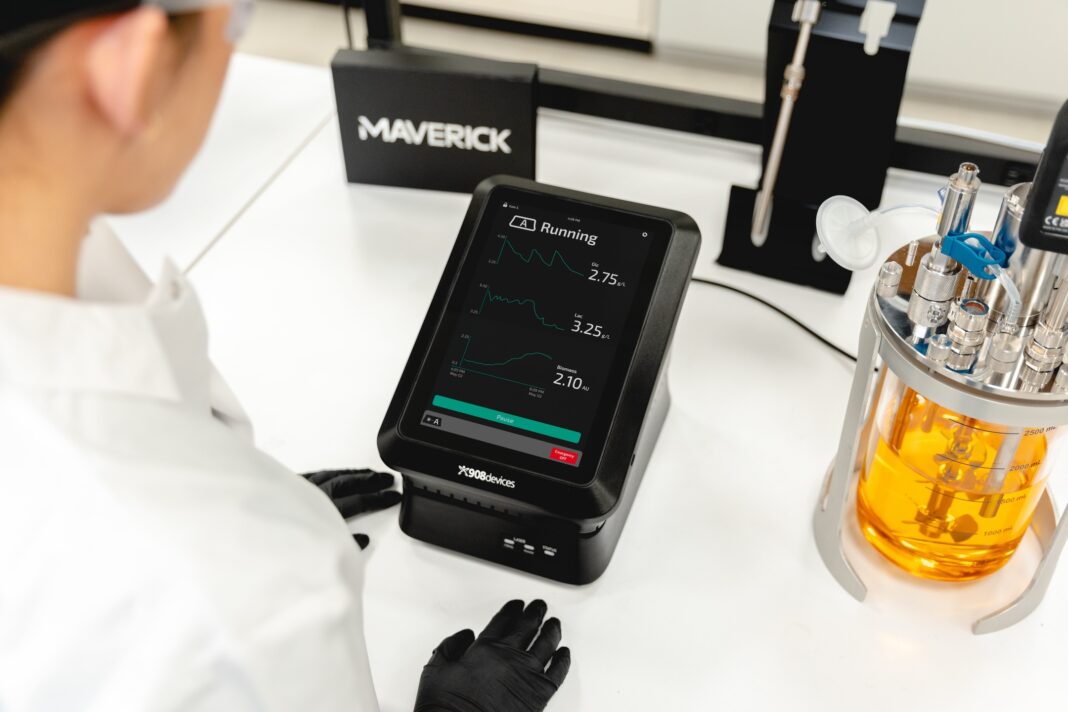As bioprocessing moves forward, companies hope to keep better track of production. A key goal is in-line analysis. This “enables continuous monitoring and control of critical process parameters in upstream bioprocess development,” says Chris Brown, PhD, co-founder and chief product officer at 908 Devices. “In-line measurements of cell cultures occur directly in a bioreactor with no sample volume loss.”
As a result, in-line analysis provides many benefits. Brown mentions sample integrity, preserving costly media, reducing waste and contamination risk, and improving product quality. “In-line analysis also saves operator time compared to manual sampling, which is labor intensive,” Brown says.
In addition, in-line analysis allows bioprocessors to improve the control of production. As Brown notes, this form of analysis “provides real-time monitoring of a process, allowing for immediate corrective action to be taken along with rich data to better support efforts in predictive bioprocess modeling.”
Challenges remain
Nonetheless, challenges stand in the way of reaching that goal. “As the biopharmaceutical industry adopts process analytical technology—PAT—to drive the advancement of Biopharma 4.0, scientists need an array of tools that provide timely measurements of critical process and product quality attributes,” Brown says.
For now, scientists need better tools to accomplish these goals. “The power of Raman spectroscopy for in-line bioprocess analysis is well known, but the expense and expertise required to develop robust and sustainable multivariate models is a massive impediment,” Brown says. “For Biopharma 4.0 to advance, scientists need a suite of devices that offer easy-to-integrate in-line analysis and control without the need for substantial expert configuration.”
Fortunately, existing technology can address the challenges and realize the potential of in-line analysis.

“There are solutions available now that can offer all the advantages of Raman spectroscopy without the cost and complexities associated with conventional spectroscopic methods,” Brown says. “These are turn-key solutions that provide real-time, in-line monitoring and control of multiple bioprocess parameters with no modeling or development required.”
This approach relies on “purpose-built de novo models that automatically process Raman spectra from a wide variety of cell culture media types and cell lines, delivering actionable process parameters in minutes,” Brown says.
Overall, in-line analysis could transform much of bioprocessing. As Brown sums it up: “In-line analyzers enable biopharmaceutical process development scientists and manufacturers to enhance process understanding and implement dynamic control strategies quicker and easier.”


